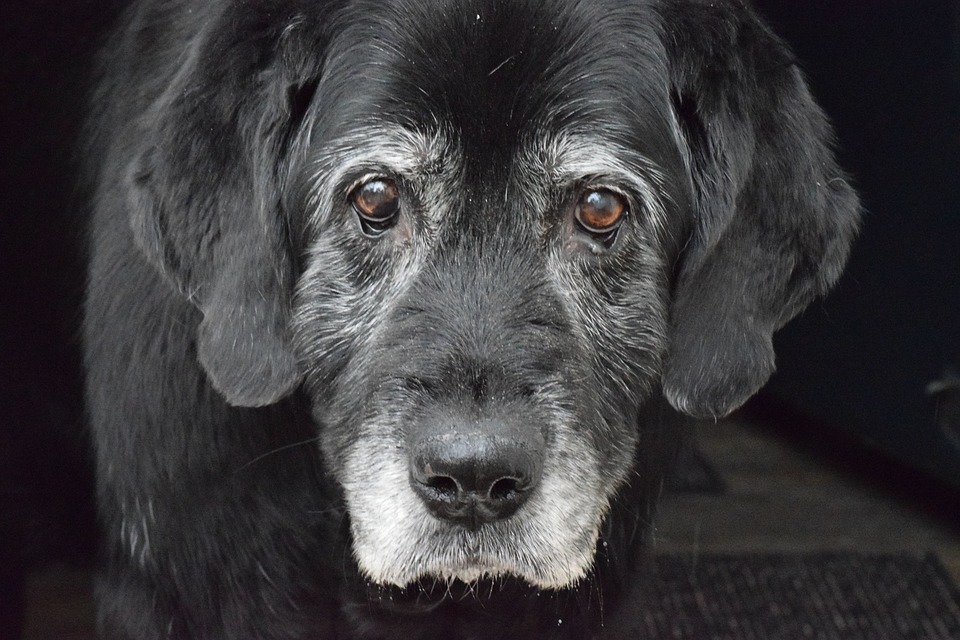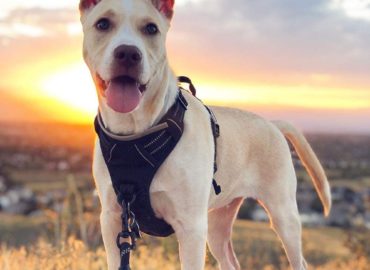
“A dog is the only thing on earth that loves you more than he loves himself”
Josh Billings
Seems so true right?
When you think of the love a dog gives it’s like its never ending and they just want to spend so much time with you, care for you, and protect you.
So much that they are willing to put their life on the line.
When you’re enjoying life and spending time with them you never stop to think of the things like “what to expect in an aging dog”.
I still remember my first dog as a kid, which was a German Shepherd, and one day when I woke up I was getting ready to head outside to play with Ruff, don’t ask me why but that was his name.
But before I can fully get out there I saw my brothers and my dad standing outside in one area and I wondered what was going on.
They began moving around the yard and then I saw it.
Ruff was laying there in between some bushes and the grass.
No one had to tell me what happened but for some reason I already knew.
To be honest I don’t really remember what happened to me next in that moment.
I may have yelled in grief or just stood there quietly watching as they debated how to handle taking care of him.
The only thing I remember is someone took me away from whatever the did to poor Ruff my German Shepherd.
I tell you that story because Ruff died unexpectedly from heart worms and neither did anyone in my family see it coming.
The loss of a loved one is never easy, but if you know what to expect and can see the signs, or symptoms, then you have a better chance of fighting it.
Giving your dog a happy and healthier life, even in their old age.
That is why we wanted to created a simple guide on a dogs old age, what to expect, and some diseases to look out for in senior dogs.
What Age Is Considered Old For A Dog?
When it comes to a dog’s age it is quite different compared to us as humans.
Keep in mind dogs mature much quicker than us, meaning they grow much faster, but they’re still like a kid at heart to us.
You remember the saying “1 year for us is like 7 dogs years”.
Well thats not actually quite true.
For example, if you look at the chart below provided by petmd you can see that 1 year in our years is equivalent to 15 years for a dog.

*This post may contain affiliate links, which means I’ll receive a commission if you purchase through my link, at no extra cost to you.
That is a lot of years for a dog.
I mean if you look at the progress pic of how fast this pup grew in just the span of 22 weeks it’s shocking.

He looks like almost a full grown dog 😲.
So what this means is that on your dog’s first birthday, in years, they are already about 15yrs old.
Remember size and breed also play a role in your dog’s age.
Smaller dogs seem to reach seniority a little slower than larger breeds.
The average dog’s lifespan can range from roughly 12-18 years.
So what does this mean for you?
Well, now that you have an accurate analysis of your dogs age you can now be more prepared of the things to come or be on the look out for as time goes by.
Help my old dog is acting strange
Does your dog bump into things by accident and it happens more times than usual?
Your dog’s behavior can change over time and if you’re not prepared and just let it slip by it can have serious repercussions if not dealt with properly.
A dog’s change in behavior could mean many things from a specific disease to something as simple as allergies.
However, since we are addressing the symptoms in regards to your dog’s age we will go over some of the more common symptoms and the diseases that can result from it.
14 Senior dog symptoms and things to watch for in older dogs
So there are some key behaviors to look out for when it comes to your dog’s aging.
These signs can come in the form of two ways: physical and mental.
Let’s discuss some of the physical symptoms first.
Physical Symptoms
1. Loss of vision or eye problems

As we eluded with the question before “does your dog bump into things, fall, or show any signs of discomfort in their eyes?” All these examples can be behaviors from cloudiness in their eyes.
This is a clear indication of an eye disorder.
A senior dog’s eyesight deteriorating is nothing to stress over for this is a normal occurrence when dogs get older.
Just know that it decreases the precision in their eyesight.
In fact, this cloudiness in their lens doesn’t mean they are becoming blind, but its actually a condition known as nuclear sclerosis or it could also be from cataracts.
Other forms of eye diseases that can be a possibility are corneal damage or dry eye syndrome.
If the idea of this stresses you out then you can relax a little because all of these conditions are treatable.
That is why it is important as your dog gets older to have regular check ups with your vet to counterattack any of these disease that may arise.
Loss of vision is usually irreversible, but with a plan of action there are many things you can do to help your dog to adjust.
2. Incontinence (increased/strained urination)

Is your dog using the bathroom a lot more or are there more mistakes happening more often?
Do they have trouble when using the bathroom i.e. straining?
As dogs get older they find it harder to control their bladder and while most dogs don’t lose complete control accidents are a common side affect with aging.
In middle age to older dogs it is very common for dogs to contract kidney disease or a urinary tract infection (UTI).
Again incontinence can be alleviated with prescription medication from your vet.
Therefore, urinary tract infections can be avoided early on so if you see your dog straining to use the bathroom be sure to tell your vet immediately.
When accidents do occur though it can distress your dog if not properly handled so try not to punish them, but give them more opportunities to use the bathroom throughout the day.
3. Bad Breath or Bloody Gums
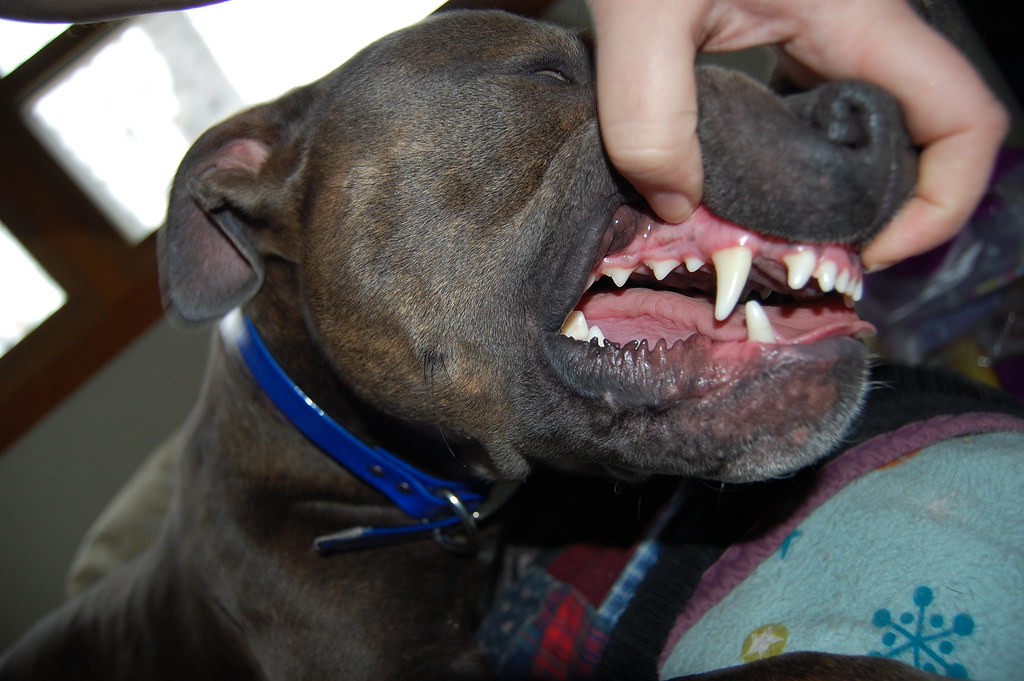
Do you regularly brush or clean your dogs teeth?
It might be time to start thinking about the different ways you can.
Using products like this dental kit for dogs is a great place to start, or if you would like an easier way there is a water additive that fights do breath and plaque and tarter.
Getting a professional cleaning by taking them to the vet is always the best place to start and maintaining afterwards will be a great benefit to them.
But, if you haven’t been taking care of your dogs teeth than the beginning signs of oral disease come in the form of…
- Bad Breath
- Drooling
- Gum Inflammation
- Loss of teeth
- Loss of appetite
Good dental hygiene can lead to decaying teeth which result into serious infections and can enter into your dogs blood stream.
Therefore it is good idea to visit your vet to diagnose any issues before anything comes up or it’s too late.
4. Lumps, Bumps, and Other Skin Issues

Skin and coat issues can come about at anytime in your dog’s lifetime but in their old age they are more susceptible to them.
These skin conditions can come in the form of:
- rashes
- lesions
- swelling
- lumps
- dry skin
- and hair loss
Of course these things can be handled and alleviated with cautionary measures from your vet, or even a change in your pets diet.
Some dogs develop even more common bumps under the skin known as lipomas, or fatty growths.
These fatty growths are common and benign, non threatening, but the dangerous thing is your dog having a bump and you assume its a lipomas.
Always have your veterinarian evaluate what the bump may be because it is always better to be safe than to assume.
5. Weight Loss or Gain
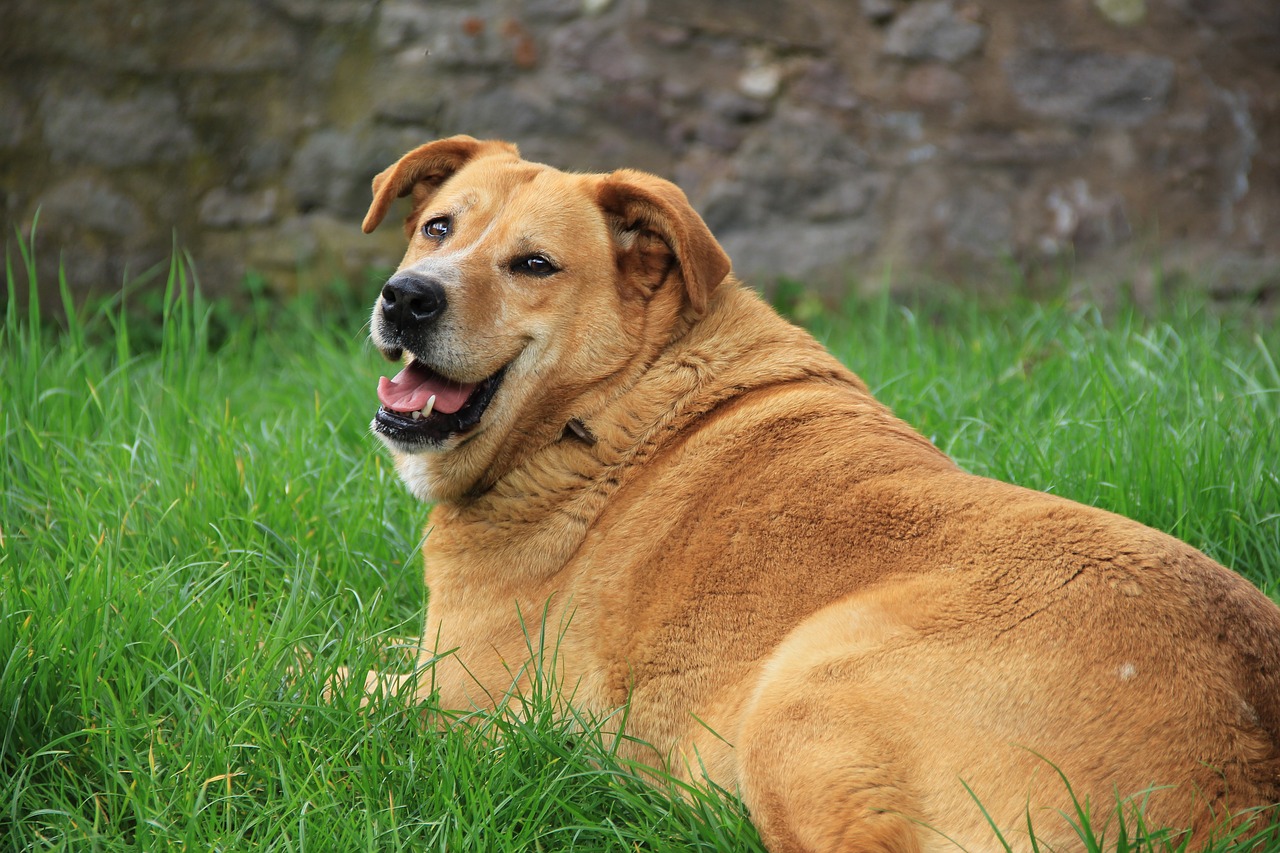
As a dog gets older it can be difficult for a dog to maintain their weight. Its really like a 50/50 chance, depending on the dog, because they could either gain weight easily or lose weight easily.
Which ever the case, it is important the kind of dog food they are given in order to help maintain the amount of calories they take in along with exercise.
Being overweight or underweight is never a good thing for your dog.
Obese dogs have a higher risk of diseases such as diabetes, heart disease, arthritis, and even cancer.
Senior dog food is a great way to manage your dogs weight especially for smaller breeds.
Watch your dogs weight and adjust how much proportions you give accordingly and visit your vet for a proper nutrition plan as well as an exercise schedule.
6. Loss of Senses

A dog senses are really what make up who a dog is and it can be hard when you see a senior dog’s senses begin to deteriorate.
Their sense of smell, eyesight and hearing all begin to fade as they get older, some may eventually become blind and deaf.
Sometimes it can be hard to tell when the signs are very subtle.
For example, when someone approaches your dog they may be easily startled, or even aggressive.
This is easily mistaken as bad behavior and are sometimes punished for their reaction, but in reality it is a sign you as an owner can overlook and miss.
But you can make life a little easier for your senior dog by making little changes such as keeping their water bowl, food and bed all in the same place so it’s easy for them to find.
Avoid sudden movements even if its trying to stroke your dog as it can be frightening for them.
7. Joint pain and/or Stiffness
Did you know dogs instinctively hide their aches and pains so looking for these signs might be a little harder to notice.
Yet clear sign to be on the watch for is if they are less active and mobile, especially after long walks.
Vigorous and long walks are almost a guarantee to leave your dog feeling sore and even speed up joint degradation.
Arthritis is one of the common disease that come up with joint issues for them.
However, to combat these issues you can do a couple of things for them.
For one you can change their dietary nutrition by increasing the amount antioxidants and omega-3 fatty acids with supplements.
Supplements including glucosamine and chondroitin can help provide pain relief for their joints.
Another way that you can help to give them some comfort is giving them an orthopedic bed.
Orthopedic beds can help to evenly distribute your dogs weight while sleeping as well as reduce stiffness and soreness.

8. Age Related Diseases

Diseases do not show any favoritism whether you’re a human or a dog, they attack and hurt more than just the person, or animal, directly affected.
Two of the most common diseases are joint disorders and Canine Cognitive Disfunction Syndrome, or CCDS for short.
CCDS is a dementia in dogs that is similar to Alzheimers in humans which can lead to many of the mental symptoms we will discuss shortly.
In a study done at the National Center for Biotechnology Information it is reported 14 -35% of dogs 8 years and older are affected by CCDS
Unfortunately CCDS and joint disorder can be managed but not cured.
If you notice your dog staring at a wall, unresponsive/slow to calls, or unwilling to go outside then contact your vet.
Cancer and liver failure are also a common thing in older dogs.
9. Restlessness or increased sleeping cycles
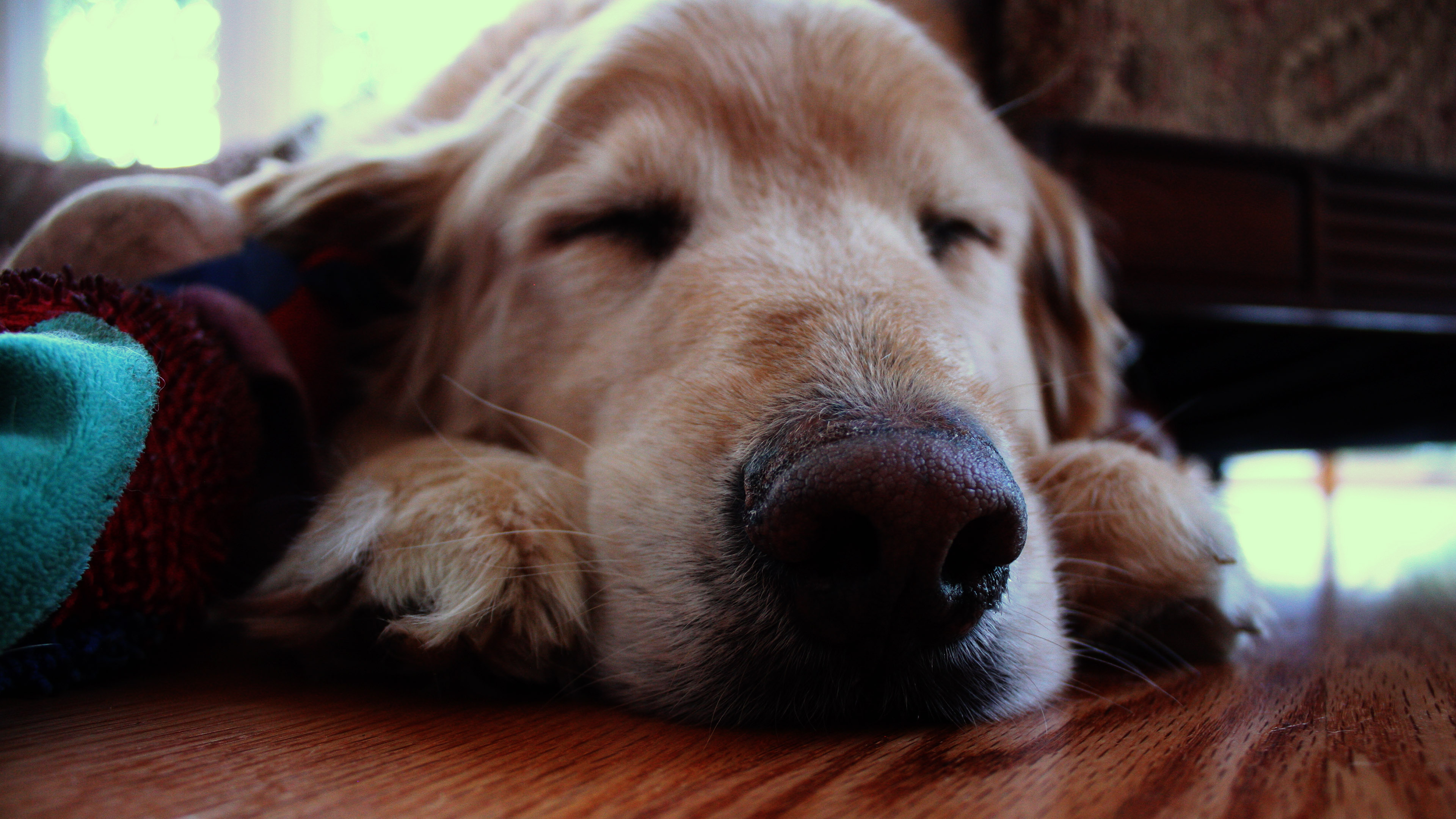
We know it’s hard to see your active dog begin to become slow, sluggish, and having difficulty getting around.
Everyday activities such as climbing stairs, jumping into the car, or even just getting up from a nap will all change for them.
Thus this leads to more rest and sleep for them and more sleep can be an indicator of arthritis, depression, or diabetes.
If you begin to see changes in their sleeping patterns it can be a clear indication of their age or health deteriorating.
Here are some signs you can be on the look out for…
- Staying awake at night and wandering around aimlessly
- Not waking up to sounds or stimuli
- Sleeping in different places
- Reluctant to curl up and sleep, or sleep while standing up
These are all signs that if you see any you should contact your vet for help.
If you want to find more info on the affects of sleeping and senior dogs the AKC has an extensive article on the subject
10. Increased Barking and Vocalization

This sympton can’t be really described or defined but they may increase barking just for no apparent reason.
It can be from many things such as an increase in anxiety or even CCDS (Canine Cognitive Disfunction Syndrome).
As their senses begin to wane their anxiousness begins to increase about their surroundings.
Dementia can set in and they become unfamiliar with you and thus begin to bark excessively.
Mental Symptoms
1. Fear of familiar people or objects
Ok on to some of the mental symptoms that dogs can produce in their old age.
We touched a little bit about this in their physical behavior because it stems from mental disorders such as CCDS.
CCDS as we stated is dementia in dogs so it is like Alzheimers for dogs.
Along with Alzheimer’s they can be forgetful of the very environment they grew up in and are familiar with.
Thus they can be more afraid of who you are jumpy when you try to pet them.
Even simple things like forgetting simple commands.
2. Forgetting Commands
So when you call them or ask them to do something don’t get mad or aggravated at them because they may not remember what the command actually means.
Or possible they could not hear you because their old age has resulted in them losing hearing.
So be easy and patient with them.
3. Increased Anxiety
Separation anxiety can be a problematic issue for a dog, but it is important to know the difference between them when it comes to senior dogs.
If your dog has accidents in the house whether you’re home or not it can be a training issue, but assuming that they have been house trained mild accidents can raise other issues.
However, to know if your dog is suffering from an increase in their anxiety during their older years is if they are having nighttime accidents.
Night time anxiety can occur when your dog can mistakenly view you asleep as a form of seperation.
Other signs that express themselves from the form of separation anxiety is pacing, panting, and pawing at you.
They are trying to get your attention.
Other symptoms that occur from the increase of anxiety is the decrease of tolerance in touch. This leads back to the first sign about the fear of familiarity.
It is not that they don’t want to be touched but that they don’t recognize you and can result in aggression, i.e. barking, biting, or fear.
4. Confusion and Disorientation
Now again CDDS can play a role for all these mental affects for a dog.
So if you see your dog staring at you in confusion when you give it a command or maybe standing/staring at a wall its time to consult your veterinarian and learn about the proper treatment for them.
What Are The Most Common Diseases In Senior Dogs?
Alright so you should have a good overview of the many symptoms that can occur in an aging dog.
Now let’s go over some of the more common diseases that an aging dog is susceptible to.
We touched lightly on some of them earlier but we wanted to list them out so you can get full understanding of the many diseases, or ailments that senior dogs can come in contact with.
Most common diseases in senior dogs
1. Dental diseases in dogs
As dogs mature in age they can contract dental diseases such as the dreaded gingivitis and if not carefully watched it can lead to other infectious diseases for the rest of the body.
Some symptoms to be aware of is…
- Bad breath
- Eating habits
- Red or swollen gums
- or missing teeth
2. Arthritis in dogs
Also known as degenerative joint disease Arthritis can have many affects on your dogs joints that lead to a lot of mobility issues.
Arthritis in their joints can cause many symptoms that include, but not limited to:
- limping as they walk or run
- difficulty rising
- trouble climbing stairs
- jumping
- falling on slippery floors
- difficulty getting comfortable
- restless nights
Sometimes its best to invest in a dog ramp to help with dogs ability to get around especially if you have elevated areas to get around.
3. Diabetes in dogs:
As a dog ages they tend to have a higher risk of diabetes.
Estimates say that 1 out of 160 dogs will eventually become diabetic.
It is rarely found in puppies, but it is most common in females and neutered males. 50% of causes can be linked to pancreatic damage usually from autoimmune disorders.
Some holistic vets propose that autoimmune disorders stem from overstimulation of the immune system from multiple vaccinations, processed foods and other factors.
Common problems and complications that can actually result from diabetes in senior dogs are
- Cataracts
- Cushing’s disease
- Infections such as UTI (urinary tract infection)
- Liver disease
- Hypothyroidism
Diabetes won’t necessarily shorten your dogs life but within the first few months of treatment it may take some time for them to get acclimated to the treatment.
Dogs are more likely to die from kidney disease then from diabetes itself therefore your dog can live a healthier life when treated properly.
For more info on diabetes and dogs check out whole dog journal here
4. Vision problems in dogs:
The cause of vision problems can range from normal aging, to hereditary, or disease.
Blindness can actually be a symptom from the previous health problem –diabetes.
However, cataracts is one of the most common vision problems that affect senior dogs.
Cataracts is the clouding of the lens of the eye.
The majority of dogs who have diabetes develop cataracts within the first month of the diagnosis.
Senior dogs are at a higher risk due to age regardless of their blood sugar and if they are being properly treated.
Yet, there is hope because if you catch the disease early on surgery can help save your dogs sight.
Also be on the look out for dry eyes that affect smaller dogs with bulging eyes like pugs.
5. Deafness and hearing loss in dogs:
This health related issue for dogs can occur in dogs around 13 years old, human years.
Causes can be as simple as wax build up, an ear infection, or just time itself and the degenerative changes in the nerves.
The changes happen gradually so you may not notice it right away.
To help you notice some of the symptoms here are some things to keep your eye on.
- Ignoring cues such as failing to come when called
- Confused by surroundings or requests
- Unresponsive to old familiar sounds, like their favorite toy
- Sleep more deeper w/o being disturbed by loud noises
If you see any of these or something similar then it may be time to consult with your vet.
When your dog begins to loose their hearing it may be time to start training them with visual cues and hand signals.
6. Cancer in dogs:
One of the leading causes of death for dogs over the age 7.
About 1/3 of dogs will experience cancer at some point in their life.
It is actually the leading cause of death for about 50% of dogs in the US.
With the many types of cancers out there from lymphoma to melanoma it is important to keep a careful eye on your dogs health.
Cancer can be defined as the growth of uncontrolled abnormal cells so signs can vary but some warning signs for cancer can be:
- Lumps, bumps, or unusually swelling
- A wound/sore that doesn’t heal
- Weight loss, this one can be tough to identify so check with your vet for unusual weight loss
- Loss of appetite
- Discharge from any opening in the body
However, if caught early enough half these cancers can be treated and cured. For more info click here
7. Prostate disease in dogs:
If your dog is intact, not neutered, then they have a higher risk of developing prostatic disease.
There are several diseases that can cause prostatic problems such as Benign prostatic hyperplasia (BPH), Squamous metaplasia, Cystic hyperplasia, and many more.
If you want to know if your dog is suffering from prostatic diseases then look for these signs
- Prolonged urination
- A thin stream of urine
- Difficulty passing bowel movements
- Any strain in urination or defecating
8. Intestinal problems in dogs:
Digestive problems can happen at any age for dogs, but more specifically for senior dogs.
Some of the causes that will lead to digestive problems are as simple as what they ate, food allergies, parasites, or infection.
These symptoms can be easily spotted through your dog like:
- Vomiting
- Diarrhea
- Stomach bloating
- Change in appetite
9. Kidney disease in dogs
Acute kidney failure is a result of abrupt decline in the kidney’s functions.
Dogs can develop these problems by ingesting things like toxins, certain medications, and tainted foods.
Some kidney problems can be detected immediately, along with its source, and can be easily treated, while chronic diseases are harder to trace since they occur overtime.
Kidney disease is usually caused by an underlying illness or hereditary condition.
Interesting enough though chronic kidney failure actually stems from dental disease…
what does that say about dental hygiene?
So what are some signs of kidney diseases?
- Change in water consumption
- Depression
- Loss of appetite
- Vomiting
- Blood in urine
10. Cognitive disorders & dementia in dogs:
Canine Cognitive Dysfunction Syndrome (CCDS), in simple terms, is Alzheimers for dogs.
There are many terms for this disorder like dementia, but in reality it’s when your dog forgets the simple things that the both of you used to enjoy and the everyday things in life.
It’s painful seeing your loved one going through something like this.
They may not forget as severely as we humans do, but their symptoms can be similar.
We’ve mentioned this extensively in this article because it truly is one of the most common disorders found in senior dogs.
So we will just reiterate some of the symptoms that come into play with CCDS.
- Disorientation
- Changes in interaction with family
- Change in sleep cycles (longer sleep times or restlessness)
- House accidents
- Trouble eating which can lead to obesity or weight loss
11. Cushing’s disease in dogs
Cushing’s disease is another one of the most common endocrine (glands that secrete hormones into the bloodstream) diseases in senior dogs.
What Cushing’s Disease actually does to a dog is produce excess secretion of cortisol that results in a dogs illness.
The common cause of Cushing disease is the presence of a benign tumor in the pituitary gland.
So how do you know if your dog can be suffering from CD?
Well here are the symptoms
- Increased water consumption
- Skin conditions
- Increased urine
- Panting
- Increased appetite
- Change in body composition
- Behavior changes
For more content on this subject check out petmd
With this extensive list of the most common disorders and diseases as well as their symptoms you should have a good grasp of any behavioral changes that your dog may experience in their aging years.
If you see any of these signs the best thing for any dog owner to do is to contact their local veterinarian and they will guide you on the best practices to execute.
What do old dogs usually die from?
Ok so we have gone over a lot of disorders and health issues that senior dogs can suffer from but as time goes by we have to face the inevitable truth…
Death.
No to sound morbid but being prepared for a loved ones death can help ease the pain if you know they’re coming up on the end of their years.
So we wanted to go over some of the things dogs die from and what are the signs to be aware of.
The most common causes of deaths in dogs are as follows:
- Cancer
- Cardiac Failure
- Kidney Failure
- Old age
- Seizures
- Immune-mediated disease
- Addison’s Disease
- Heart disease and stroke
What are the signs of your dog dying?
So you now have an idea of some of the most common causes of death in a dog but are there tell tale signs to look out for.
Yes there are and as an owner you should be mindful of some of the signs, but always check because some of the signs are similar to other related illnesses as we discussed in this extensive guide.
But it’s always good to know especially in a senior dog.
- Lethargy and Disinterest
- Stops eating and drinking
- Loss of coordination
- Incontinence
- Panting
- Seeking for Comfort
These are key indicators that a dog may be nearing the end of their life so if you may see your dog displaying more than one of these it’s best to prepare yourself and give them as much comfort that you can.
Conclusion
So There You Have It.
Just about everything on what to expect from an aging dog, did this all make sense?
You have been informed about how to determine your dog’s real age compared to us as humans, when a dog is considered old, how your dog behavior changes as they age, and the diseases and illnesses they are prone to because of their seniority.
Not to mention the signs and symptoms to be aware of in order to help maintain their health.
I don’t know do you think we covered everything?
Well were not done yet. We are currently working on the top essentials every owner should know about to help give some comfort to their aging dog.
However, we strongly advise that the best route for you to take with you and your dog is to regularly visit your local veterinarian if you see any of these symptoms that could lead to any serious issues we addressed.
Your doctor can help you with the best solution and treatments.
I hope this article was helpful in getting to know your best friend a little better and if you found value in it then please share it with someone.

